|
九大景點
池上斷層的斷層幾何及滑移模式是屬於斷層面往東傾斜之「逆斷層」。而逆斷層在地表造成的變形特性主要有:(一)斷層帶的擠壓破裂及(二)斷層上盤的相對抬升與褶皺(如圖二所示)。池上斷層地表影響的變形帶分布在一個幾公尺到幾百公尺寬的狹長地帶。在本站「曾宅」,我們可以觀察到一些人工建物在斷層帶裡的損壞。有些是受到斷層本身的滑移錯動而產生錯位(如古井錯位,圖一);有些是受到斷層帶中地表持續擠壓變形(如圍牆、水泥渠溝,圖二)或近斷層上盤的擠壓及抬升(如圍牆、房屋變形破裂,圖二)。 The Chihshang Fault is a reverse fault (with left-lateral strike-slip component), along which the Coastal Range is thrust over the alluvial deposits of the Longitudinal Valley.The deformation along the surface trace of the Chihshang Fault is characterized by fracturing and shortening along the fault as well as uplift and folding in the hanging wall of the fault (Fig. 2). As a result, the width of the deformation zone ranges from a few meters to a few hundred meters, depending on site locations.At this site, we can observe different deformation features inflicted on the human constructions within the surface fault zone. For instance, a well has been transected and tilted probably by shearing of the fault (Fig. 1). We can also find tilted, fractured retaining walls and wave-shaped roof, which have been deformed mainly due to shortening strain in the fault zone (Fig. 2). 錯位傾斜的古井Transected, tilted well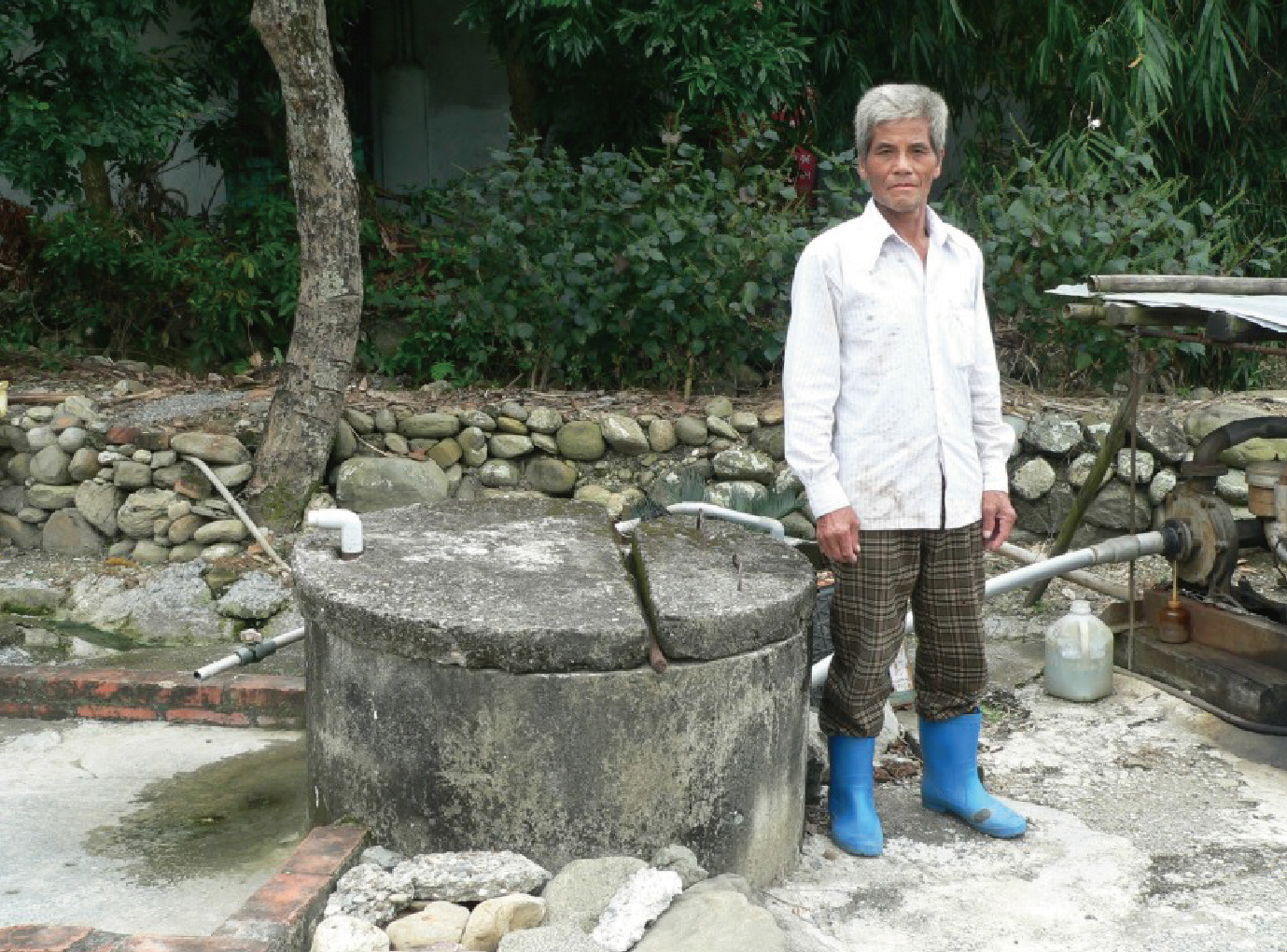
圖一:斷層帶中錯位傾斜之古井,及其與斷層作用之關係示意圖。從古井頂端往井下望,可發現井壁有明顯的傾斜及錯位,極可能是因為斷層的持續滑動剪裂造成的。
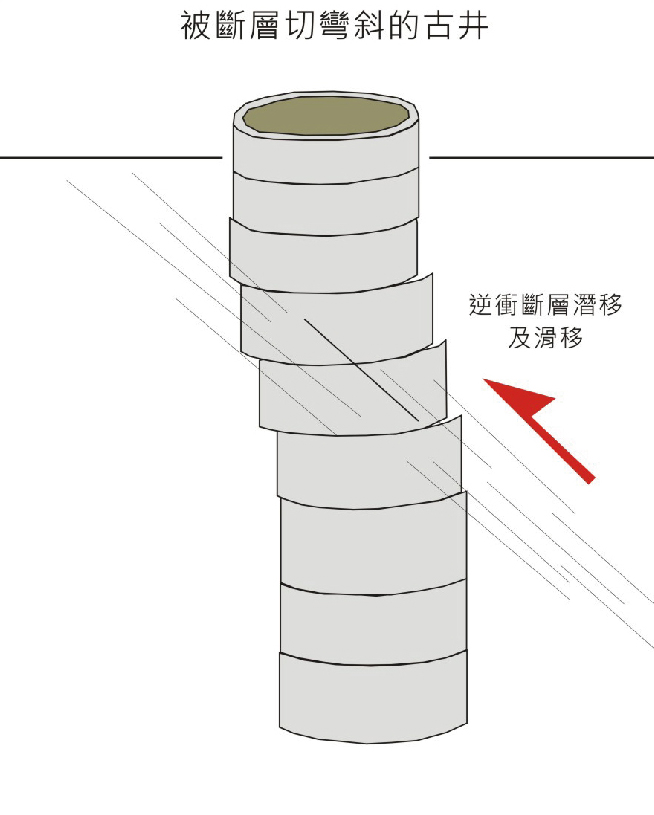
折彎斷裂的牆和屋瓦Fractured walls and wave-shaped roof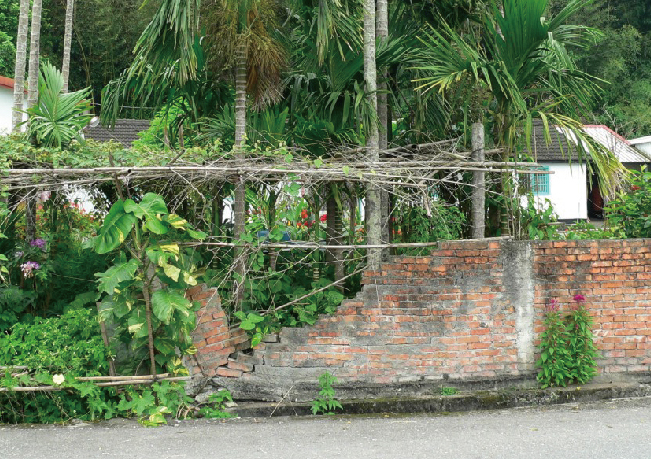
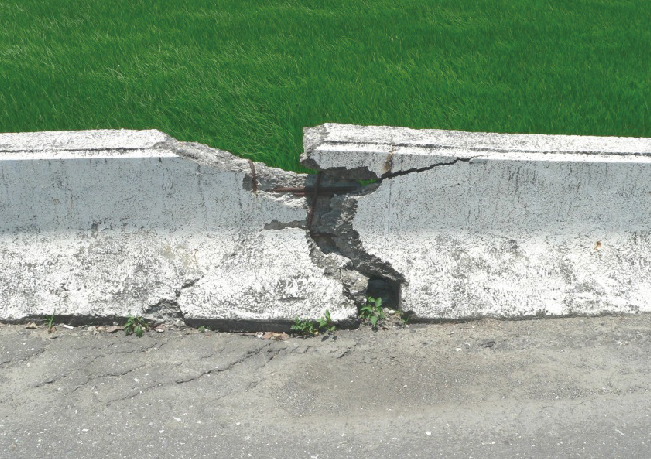
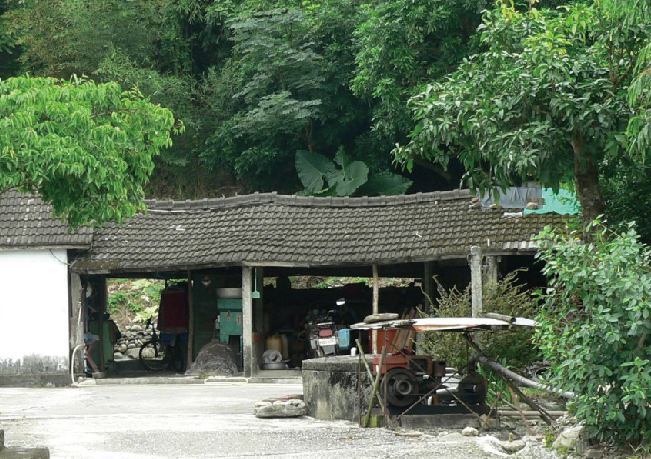
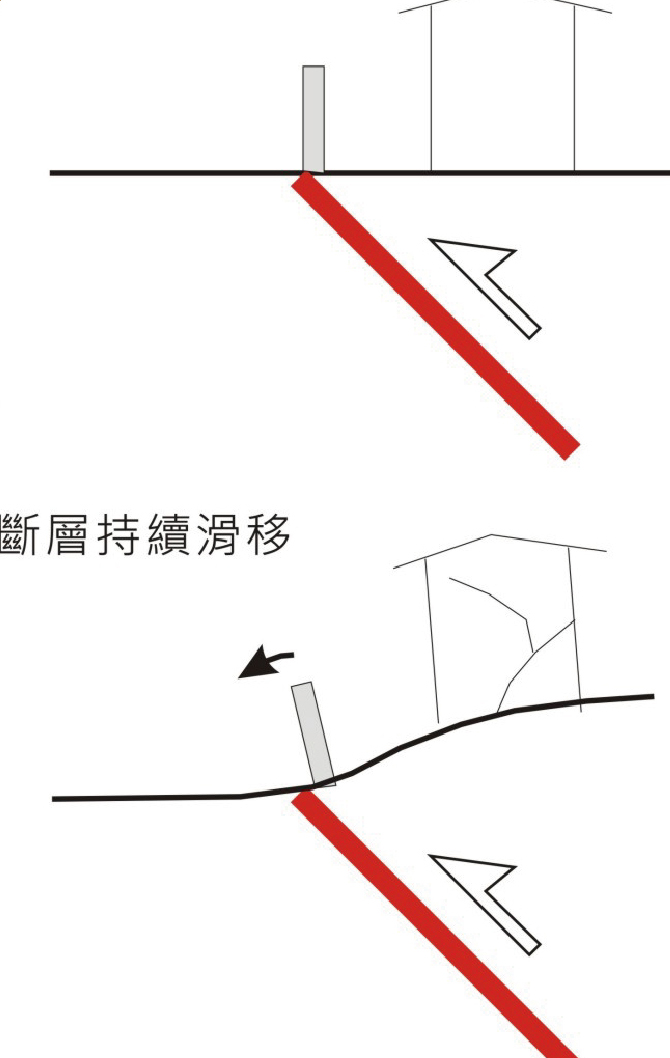
圖二:本解說點可觀察到的幾個受斷層帶擠壓抬升而變形的例子。左上、道路北側圍牆被抬升傾斜及擠壓而破裂。左中、道路南側水泥牆及圳溝受擠壓而破裂。左下、房屋屋頂受擠壓而產生波浪狀變形。右上、解說示意圖。
|


